Omega Speedmaster Dark Side of the Moon Apollo 8
A capsule of space history on your wrist with lunar surfaces, a ceramic case and Omega’s iconic manual-winding Moonwatch movement.
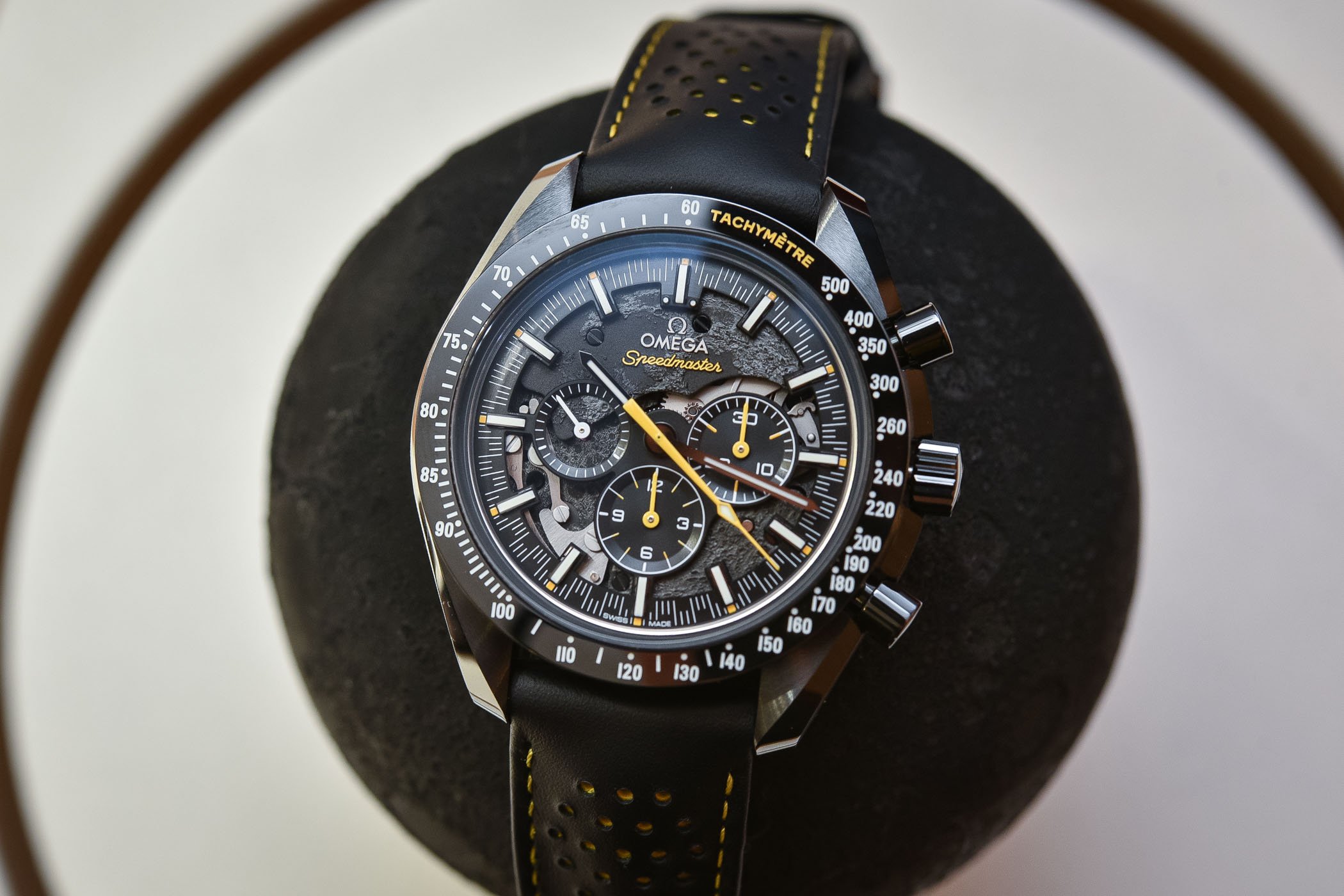
Fifty years ago, on Christmas Eve 1968, Apollo 8 became the first manned spacecraft to orbit the Moon and the three astronauts on board the first men to witness the far, or dark side, of our celestial neighbour. To celebrate this encounter, in 2013 Omega dedicated an entire collection of black-themed Speedmasters known as the Dark Side of the Moon. During Baselworld 2018, Omega presented the latest crew member of this collection, the new Apollo 8. A hybrid of sorts, the Apollo 8 shares the black ceramic case of the Dark Side of the Moon collection but has jettisoned its automatic co-axial engine in favour of Omega’s legendary calibre 1861, the manual-wound movement of the classic Moonwatch.
With its dramatic skeletonised dial, the bridges and main plate reveal an extraordinary surface designed to recreate the rugged surface of the Moon. Coupled with the vibrant canary-yellow touches on the chronograph indications, for some unconditional Speedy purists, the Apollo 8 has resulted entirely alien (note: for an in-depth review of the Speedmaster and its evolution since 1957, don’t miss our 5-part series: The Speedmaster Chronicles).
Apollo 8: the latest member in the Dark Side of the Moon family
The epic Apollo 8 flight of 1968 accomplished many world firsts but what ignited earthlings’ fantasy was the sighting by its crew of the dark – far – side of the Moon. Capitalising on Omega’s intimate relationship with America’s space odyssey, the Speedmaster Dark Side of the Moon collection was launched in 2013. Designed to highlight the unseen side of the Moon, all the 44.25mm cases of this collection are crafted in high-tech black ceramic. In this respect, the new Apollo 8 follows suit and is decked out in a striking black ceramic case – but that’s where the similarities end.
Unlike the regular Dark Side of the Moon chronographs that are fitted with calibre 9300, Omega’s proprietary automatic co-axial movement, the Apollo 8 flaunts manual-winding calibre 1869, a version of Omega’s celebrated calibre 1861. The dial of the Apollo 8 is a radical departure from other dials in the Dark Side collection and abandons the twin sub-dial layout and date window in favour of a more traditional display of three counters with no date. But there is more. By integrating a manual-winding movement, designers at Omega have managed to keep the case relatively thin reducing the height by 2.5mm to a wearable 13.8mm thickness.
Lunar Surface
What makes the Omega Speedmaster Dark Side of the Moon Apollo 8 so intriguing is the black mottled bumpy lunar surface recreated on parts of the movement. Paying homage to the two ‘sides’ of the Moon, the dial side is lighter in colour to reflect the view we get from Earth, while the back of the watch is darker to replicate the far side of the Moon that the astronauts saw. To achieve this realistic lunar surface, laser ablation was used to decorate the bridges and main plate of the blackened movement.
Almost suspended in space, the three sub-dials are arranged in a classic Moonwatch configuration. While the chronograph counters at 3 and 6 o’clock are snailed, the small seconds counter features a great detail: if you look closely you will notice how the uneven lunar surface of the underlying bridges invade the background of the sub-dial.
Green Lume on the Moon
To create contrast against so much darkness and improve legibility, Omega has gone for a touch of vibrant yellow on the chronograph hands, the tips of the hour markers, the ‘tachymètre’ inscription on the bezel and the perforated black strap with its yellow rubber insert. If you factor in the effect of the generous application of white Super-LumiNova® – which emits a cool green lume – applied on the numerals of the tachymetre scale, on the Omega symbol on the crown and on the hour markers and hands, this watch really glows in the dark.
Omega Calibre 1869
The Omega Calibre 1869, the manual-winding chronograph movement powering the Apollo 8, is a derivation of Omega’s iconic calibre 1861; the number 9 on the reference is a tribute to the first Moon landing in 1969. The reverse of the watch reveals the movement in all its glory and is engraved with the words of Command Module Pilot Jim Lovell, “we’ll see you on the other side”, uttered as the Apollo 8 began its orbit of the far side of the Moon where radio transmissions from Earth are shielded. Partially skeletonised with blackened bridges treated with laser ablation, blackened screws and contrasting nickel-coated moving parts, the view of the movement on both sides of the watch is truly spectacular. Thinner than the automatic movement inside other members of the Dark Side collection, calibre 1861 was the ideal candidate for the elaborate decoration of the Apollo 8. Humming at a frequency of 21,600vph, the movement provides a 48-hour power reserve – just about enough time to perform 24 lunar orbits.
It might not be everybody’s cup of tea, but I love the sheer amount of details, the contrasting textures and cool lume that bring a slice of the mysterious Moon into our mundane lives. The Speedmaster Dark Side of the Moon Apollo 8 will be available in August 2018 and will retail for EUR 9,000. For more information, please consult the official brand webpage: www.omegawatches.com.

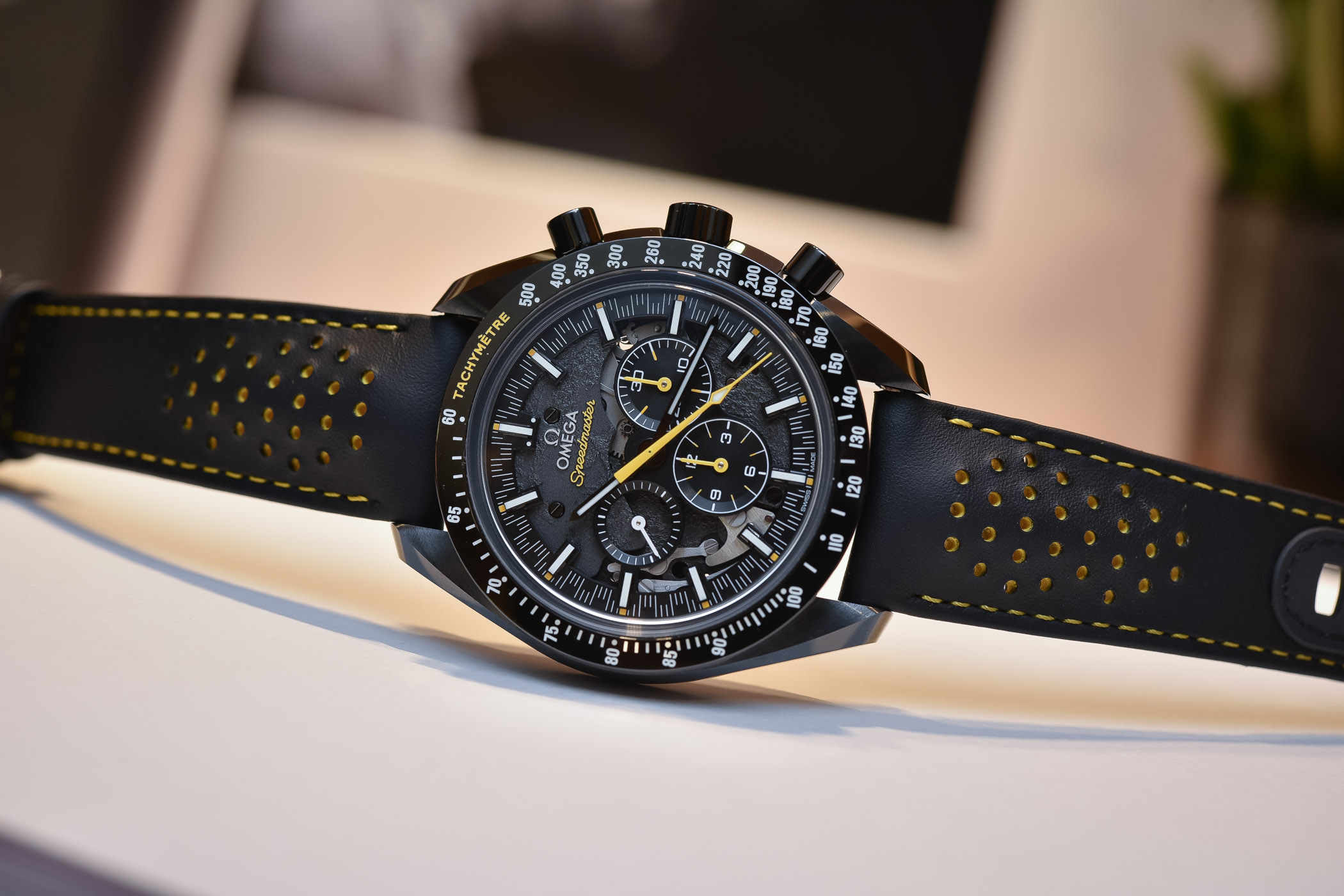
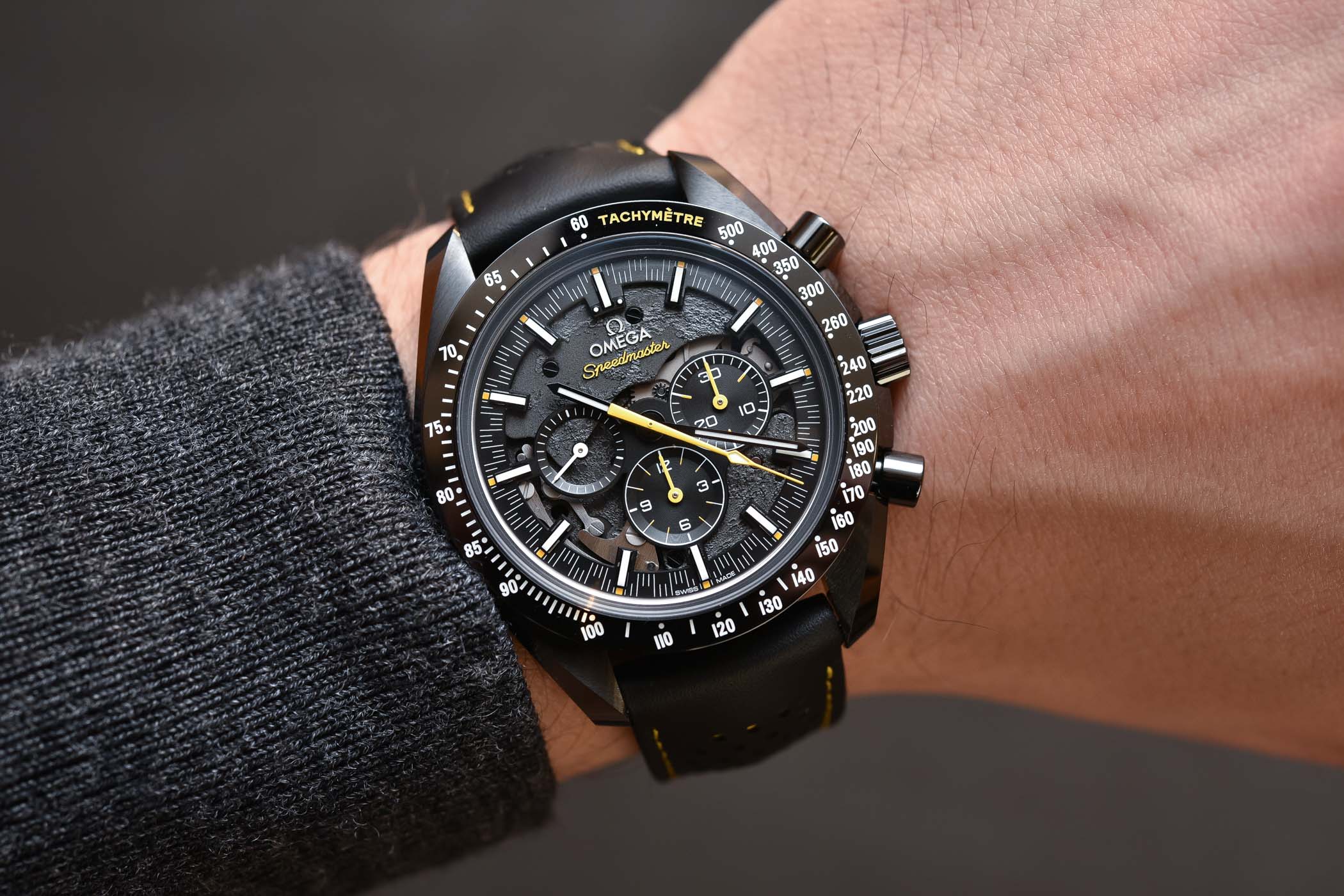

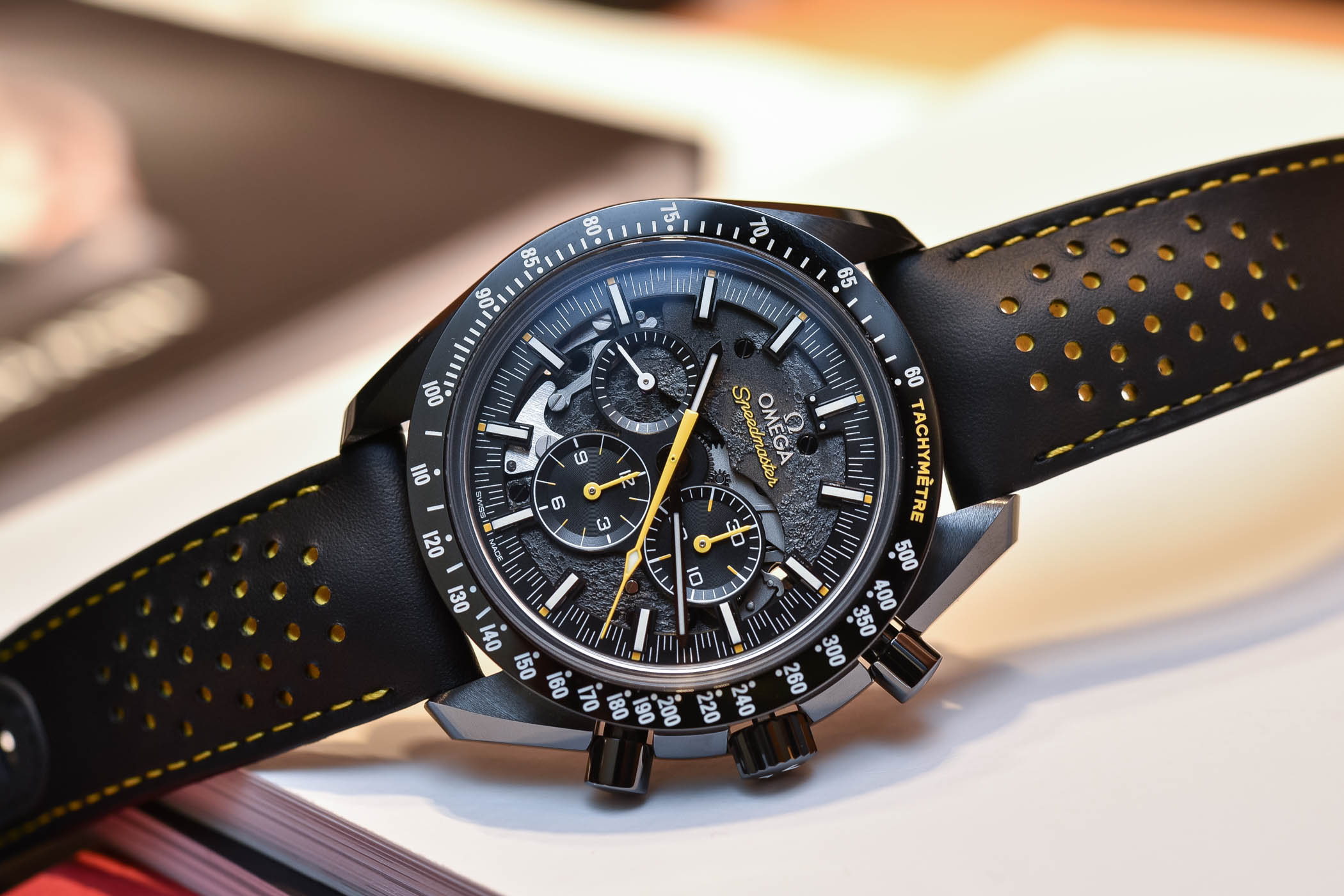

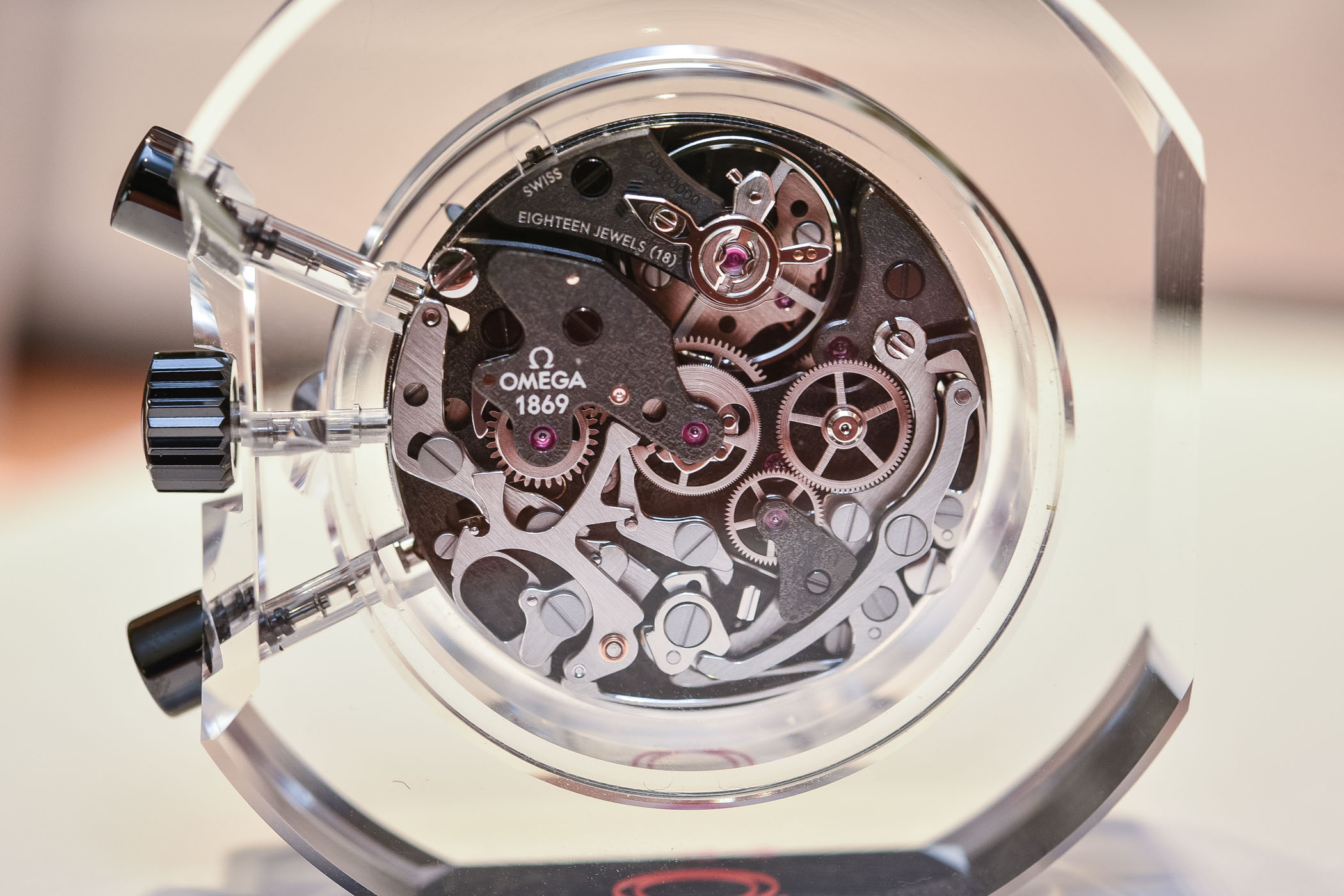
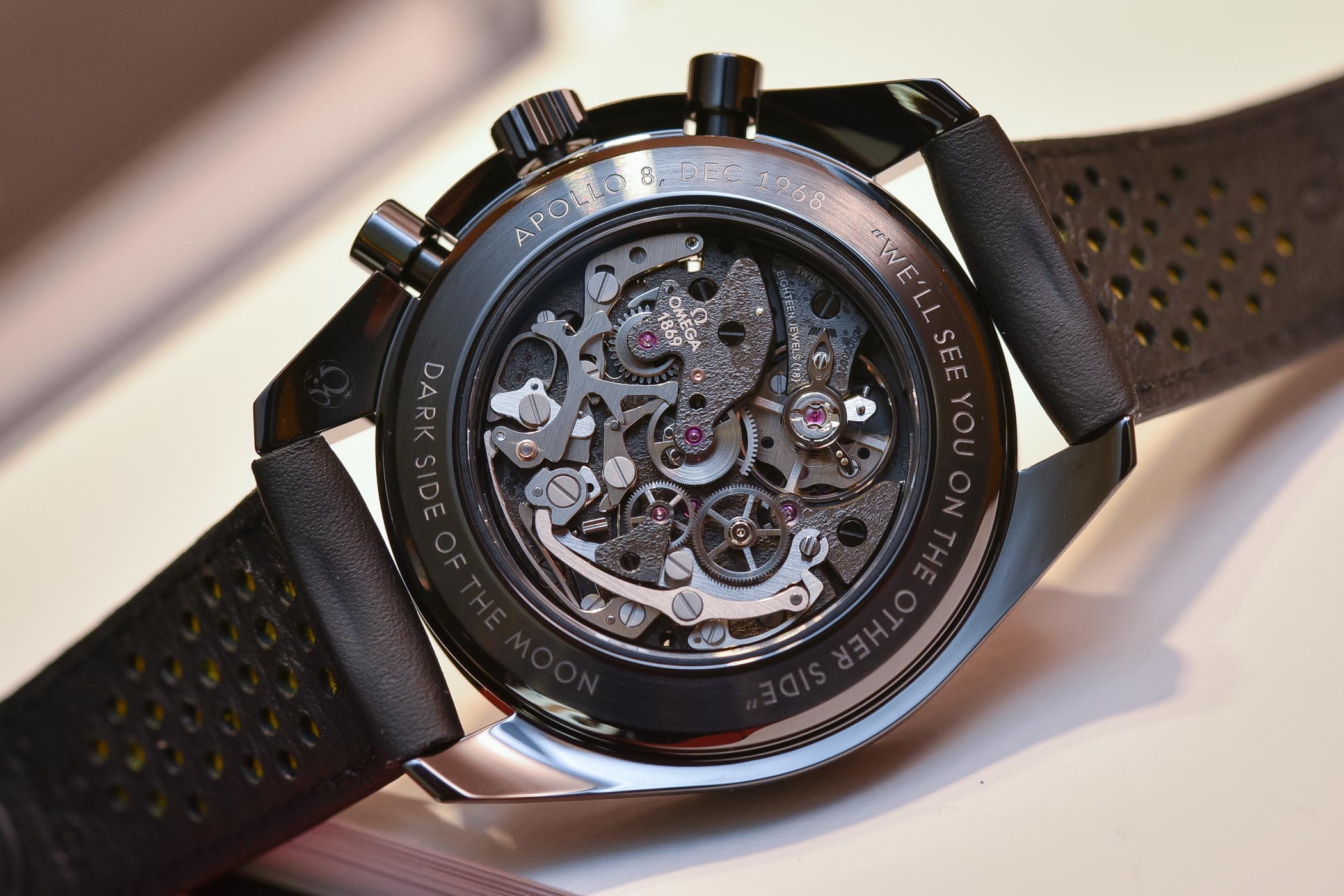



2 responses
An very attractive iteration of an iconic watch. My only gripe (I won’t mention pricing) is its size : a 44+ mm case is too large for many of us, especially considering that the 1861/9 caliber is only 27mm in diameter. But the wow factor is very real.
Great story, how the heck can one tell time with those arms being so non contrasting. Too many white lines. Maybe I’m getting old (50) but that alone would cause me to look the other way.